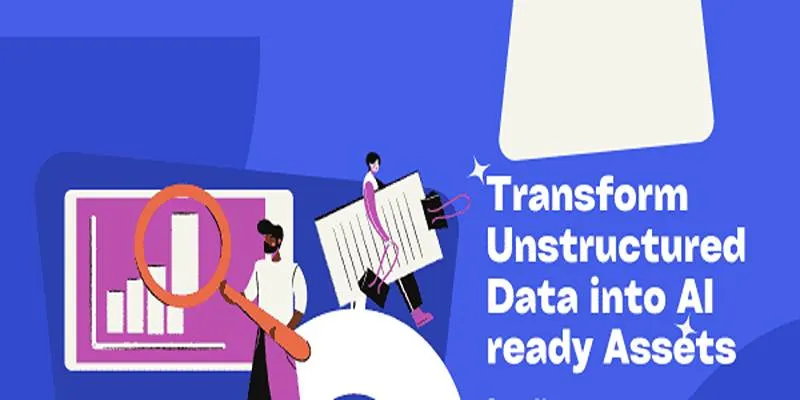Building your own AI app may seem daunting, but it doesn’t have to be expensive or require expert skills. With the right tools and guidance, anyone can create intelligent apps that solve real-world problems. This guide will show you how to design and develop an AI application on a budget, step by step.
Why Build AI Applications?
Software using AI-driven tools presents breakthrough advantages that transform how organizations and users handle their work issues. Here’s why they’re worth building:
Automation
AI enables businesses to focus on essential projects by performing precise and time-consuming repetitive tasks. Automation enhances productivity by reducing errors, leading to improved productivity rates.
Personalization
AI simplifies creating hyper-personalized experiences by analyzing user behavior, preferences, and trends. Whether it’s tailored product recommendations or customized marketing strategies, AI helps brands build stronger, more meaningful connections with their audience.
Efficiency
Advanced machine learning systems, operating with predictive analytics, process data at scale while discovering new insights that typically escape human detection. This characteristic enables organizations to make more intelligent, data-driven decisions and improve their competitive market positions.
Scalability
AI excels with large datasets and complex operations, making it ideal for organizations needing efficient scalability. Businesses can expand while maintaining their standards of excellence combined with operational performance.
Key Tools and Frameworks for AI Development

1. Open-Source AI Libraries
Open-source AI libraries offer powerful tools for developers, providing flexibility and cost-effectiveness. Here are some widely used options:
- TensorFlow (Google): A robust framework for both machine learning and deep learning applications.
- PyTorch (Meta): Celebrated for its user-friendly interface and adaptability, making it ideal for research and development.
- Scikit-learn: Perfect for implementing traditional machine learning algorithms, like regression and classification.
These libraries are supported by extensive documentation and thriving communities, making them accessible for both beginners and experienced developers.
2. Pre-Trained Models
Skip the lengthy process of training models from scratch by leveraging pre- trained models. Platforms such as Hugging Face and TensorFlow Hub offer a library of ready-to-use models for:
- Natural Language Processing (NLP)
- Image Recognition
- Speech-to-Text Conversion
These models can be fine-tuned to meet your specific needs, saving time and resources while delivering excellent performance.
3. Cloud-Based AI Services
Cloud-based AI platforms provide powerful tools without the need for expensive hardware, offering flexible, pay-as-you-go pricing. Key providers include:
- Google Cloud AI: Features AutoML for custom model training and deployment.
- Microsoft Azure AI: Offers advanced cognitive services for vision, language, and speech processing.
- IBM Watson: Provides enterprise-grade AI solutions with scalability for business needs.
These platforms make AI technology accessible, even for those without deep technical expertise, enabling seamless integration into your applications.
Step-by-Step Guide to Building an AI App
1. Define Your Objective
Start by identifying the specific problem your app will solve. AI applications often include:
- Chatbots for customer support
- Recommendation systems for personalized e-commerce experiences
- Predictive analytics for business forecasting
Having a clear goal helps you select the right tools and avoid unnecessary complexity.
2. Choose Your Development Approach
Pick a development method that suits your expertise:
- No-Code/Low-Code Platforms: Tools like Bubble and Lobe enable AI integration without requiring programming knowledge.
- Custom Development: If you’re comfortable with coding, frameworks like TensorFlow and PyTorch provide maximum flexibility and control.
3. Collect and Prepare Your Data
Quality data is the foundation of any AI model. Here’s how to get started:
- Source relevant datasets from platforms like Kaggle or public APIs.
- Clean and preprocess the data to eliminate errors and inconsistencies.
- Label data if you’re building a supervised learning model.
4. Train and Test Your Model
- Choose the right algorithm by aligning it with your app’s specific needs and objectives. Evaluate the complexity of the task and the resources at hand to select the most effective approach.
- Train your model using a well-prepared dataset. Split the data into training and testing subsets to ensure the model learns effectively while being evaluated for accuracy.
- Assess performance using key metrics such as accuracy, precision, recall, and F1 score. These evaluations help ensure the model is dependable and ready for real-world deployment.
5. Deploy Your AI Application
Transform your AI model into a functional application by deploying it through one of these approaches:
- Cloud platforms like AWS, Google Cloud, or Azure offer scalability to manage growing workloads and ensure reliable performance.
- Web or mobile frameworks such as Flutter or React Native enable seamless cross-platform development and ensure broader accessibility.
- Edge devices allow for offline AI processing, handling tasks locally without relying on cloud connectivity.
While building an AI application may feel daunting, a structured plan, the right tools, and a methodical approach can turn your vision into reality.
Smart Ways to Cut Costs in AI Development
Developing AI applications doesn’t have to be expensive. Here are some practical strategies to minimize expenses:
- Take advantage of free cloud tiers: Use free plans from cloud providers to test and build before committing to paid services.
- Utilize open-source tools: Opt for reliable open-source software over costly proprietary solutions.
- Begin with an MVP: Start with a Minimum Viable Product to test your concept before scaling up.
- Engage with AI communities: Access free resources, advice, and mentorship by connecting with the broader AI community.
Challenges and Strategies to Overcome Them

Developing AI on your own is more accessible than ever, but it comes with its share of challenges. Here’s how you can tackle some common obstacles:
- Limited Data: Leverage synthetic data generation or apply data augmentation methods to enhance the quality and quantity of your datasets.
- Computational Constraints: Optimize your models for better efficiency or utilize cloud-based GPU services to handle intensive processing needs.
- Lack of Expertise: Build your skills through online platforms like Coursera or Udemy, or team up with AI enthusiasts and experts to accelerate your learning curve.
Conclusion
Building intelligent applications doesn’t have to break the bank. With the right strategy, you can create powerful AI-driven solutions efficiently by utilizing open-source tools, pre-trained models, and cost-effective cloud services. Begin with small, manageable projects, experiment along the way, and scale progressively as your expertise and confidence grow.
 zfn9
zfn9























